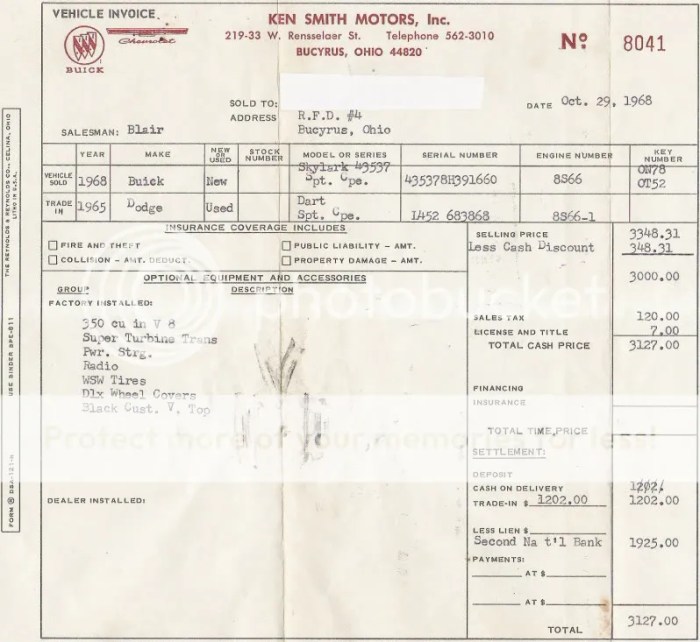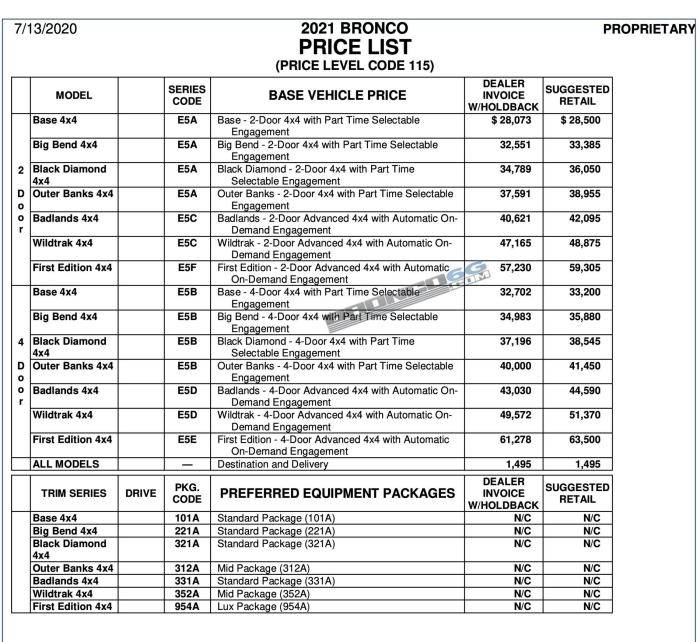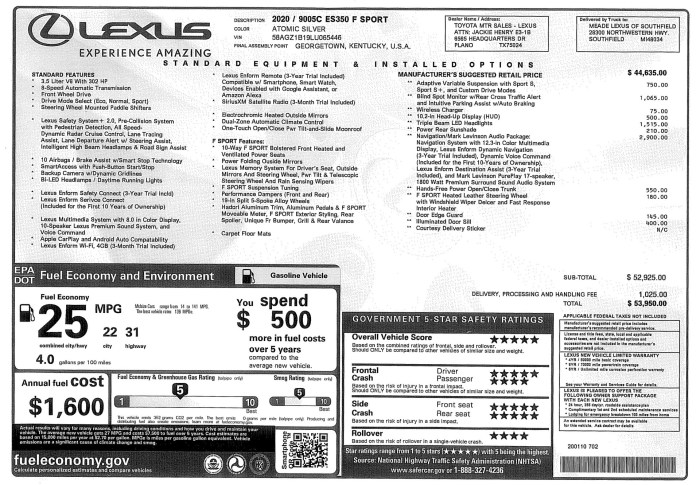What is the Wholesale Price of a New Car?
Understanding Wholesale Car Pricing
What is the wholesale price of a new car – The wholesale price of a new car represents the price a dealership pays to the manufacturer. It differs significantly from the Manufacturer’s Suggested Retail Price (MSRP), the price advertised to consumers. Understanding this distinction is crucial for both dealerships and consumers seeking to make informed decisions.
Determining the wholesale price of a new car involves many factors, including the manufacturer’s suggested retail price (MSRP) and market demand. However, recent changes in pricing strategies, such as those seen with the introduction of a tesla new lower price car , are influencing the overall wholesale market. Ultimately, understanding the wholesale price requires careful consideration of these market dynamics and specific vehicle models.
MSRP vs. Wholesale Price
The MSRP is the publicly listed price, designed to attract customers. The wholesale price, on the other hand, is a negotiated price between the manufacturer and the dealership, often significantly lower than the MSRP. This difference accounts for the dealership’s profit margin and operational costs.
Factors Influencing Wholesale Car Prices, What is the wholesale price of a new car
Several factors influence the wholesale price a dealership pays. These include the manufacturer’s brand reputation, the specific car model and its features (e.g., engine size, technology package), current market demand, the time of year (seasonal variations exist), and the overall economic climate.
Dealer Incentives and Rebates
Manufacturers frequently offer incentives and rebates to dealerships to stimulate sales. These can significantly impact the wholesale price. For example, a manufacturer might offer a $1,000 rebate per vehicle sold during a slow sales month, effectively lowering the wholesale price for the dealership.
Wholesale Price Comparison of New Car Models
| Manufacturer | Model | Wholesale Price (Estimate) | MSRP |
|---|---|---|---|
| Toyota | Camry | $22,000 | $26,000 |
| Honda | Civic | $19,500 | $23,000 |
| Ford | Focus | $18,000 | $21,500 |
Note: These are estimated wholesale prices and may vary based on several factors.
Accessing Wholesale Car Price Information

Source: photobucket.com
Obtaining precise wholesale car pricing data publicly is challenging. Information is generally confidential, shared only between manufacturers and their authorized dealerships.
Challenges and Information Sources

Source: bronco6g.com
Public access to exact wholesale prices is limited due to their confidential nature, protecting manufacturer-dealer relationships and business strategies. While specific websites are excluded, general industry publications and automotive news sources may occasionally offer insights into market trends affecting wholesale pricing, though precise figures are rare. These sources often focus on broad market analysis rather than specific model pricing.
Automotive Auctions and Wholesale Prices
Automotive auctions play a significant role in establishing wholesale prices, particularly for used cars but also influencing the perception of new car value. The prices achieved at these auctions provide a benchmark, albeit not a definitive one, for the market value of vehicles.
Hypothetical Dealership Negotiation
Imagine a large dealership negotiating with a manufacturer for a bulk order of 100 new SUVs. The dealership might leverage its volume purchase to negotiate a lower wholesale price per vehicle, potentially securing a discount of $500 or more per unit compared to a smaller dealership ordering only a few vehicles.
Factors Affecting Wholesale Price Negotiation: What Is The Wholesale Price Of A New Car
Several factors influence a dealership’s ability to negotiate favorable wholesale prices. These factors involve the dealership’s size, purchasing volume, and negotiation skills.
Dealership Negotiation Strategies
Large dealerships often have more negotiating power due to their higher purchasing volume. They can secure better deals by ordering larger quantities of vehicles, creating leverage for lower wholesale prices. Smaller dealerships may need to focus on building strong relationships with manufacturers or finding niche markets to improve their negotiating position.
Impact of Volume Purchases
Volume purchases significantly influence wholesale pricing. Dealerships buying in bulk can typically negotiate lower prices per vehicle due to economies of scale for the manufacturer. This allows the manufacturer to streamline production and reduce overall costs, leading to price reductions for larger orders.
Negotiation Tactics
- Leveraging market data on competitor pricing.
- Highlighting strong sales performance and customer loyalty.
- Negotiating package deals involving multiple vehicle models.
- Exploring financing options and incentives offered by the manufacturer.
Wholesale Price vs. Consumer Price

Source: automoblog.net
The consumer price (MSRP) significantly exceeds the wholesale price. This difference reflects various markups added throughout the distribution chain.
Markups and Dealer Profit Margins
The journey from wholesale price to consumer price involves several markups. These include the dealer’s profit margin, advertising costs, transportation expenses, preparation fees, and other operational overhead. The dealer’s profit margin is a crucial component, representing their earnings from each vehicle sale.
Visual Representation of Price Differences
Imagine a bar graph. The first bar represents the wholesale price. The second, taller bar represents the MSRP. The difference between the two bars is visually divided into segments representing dealer profit margin, advertising, preparation fees, and other operational costs. This clearly illustrates the various cost components added to the wholesale price to arrive at the final consumer price.
The Impact of Market Conditions
Market conditions, economic factors, and vehicle availability significantly impact wholesale car prices.
Market Demand and Economic Conditions
High market demand for specific models pushes wholesale prices upward. Conversely, during economic downturns or recessions, demand may decrease, leading to lower wholesale prices as manufacturers incentivize sales. Inflation also plays a role, increasing the cost of manufacturing and thus affecting wholesale pricing.
New Car Shortages and Supply/Demand
New car shortages, such as those experienced in recent years due to supply chain disruptions, can drastically increase wholesale prices. This is a direct consequence of the fundamental principles of supply and demand. Limited supply coupled with consistent demand leads to inflated prices. For example, a limited supply of popular electric vehicles might lead to a 10-15% increase in their wholesale price compared to a scenario with ample supply.
Essential FAQs
How often do wholesale car prices change?
Wholesale prices can fluctuate frequently, influenced by market demand, economic conditions, and manufacturer incentives. They can change daily, weekly, or monthly.
Can I access wholesale car pricing online?
Public access to precise wholesale pricing data is limited. While some resources offer estimates, complete accuracy is typically restricted to industry insiders.
What is the typical markup between wholesale and retail price?
The markup varies depending on the vehicle, dealer, and market conditions, but it can range from several thousand to tens of thousands of dollars.
Does the car’s color affect the wholesale price?
Generally, color has minimal impact on wholesale price, unless it’s a highly sought-after or unpopular color in a specific model.




















